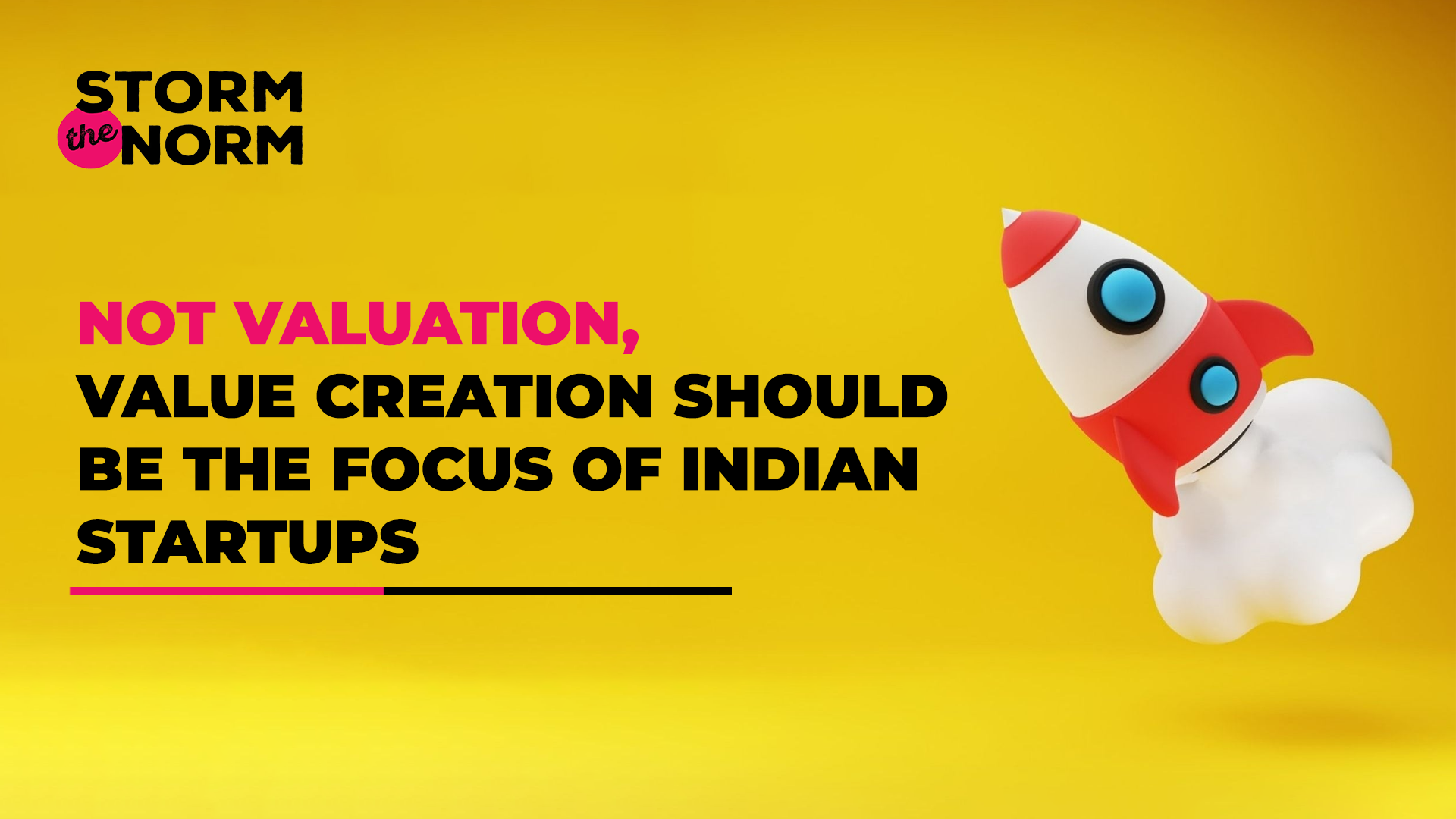
Just a few days back, there was coverage around Zomato’s pre-IPO buzz, with that “start-up” hoping to raise $1.1 billion or thereabouts from the stock market but also having a current balance sheet showing current revenue being only slightly more than their current losses (at around INR 2385 cr.).
What gives start-ups the confidence (apart from having all that VC money at their disposal) to not bother about profitability at all in their first several years of existence? Why has it become an acceptable norm to prioritize valuation over value creation? And why have start-ups and VCs alike embraced this as the Holy Grail?
This might sound uncharitable but it does seem like there’s a sense of entitlement that has seeped into start-ups and VCs alike—to make money for themselves before anything else.
The funny part is that the disruptive business idea that probably got the start-up founders and the VCs excited in the first place was likely around changing the world, or at the least, making it better for customers. And yet, the pre-IPO part of the journey seems to relentlessly focus on valuation creation at all costs (including making huge losses).
Kara Swisher, described by some as Silicon Valley’s most powerful tech journalist, describes start-ups whose VC money is running out but who haven’t yet become profitable as “assisted living for millennials.” NYT journalist Kevin Roose calls VC money for unprofitable unicorns “Millennial Lifestyle Subsidy.” So why has the world so easily accepted the norm that it’s okay to be a loss leader in order to become a unicorn?
Imagine having this question from the point of view of listed companies. What might sound like harsh indictments on the start-up world from the likes of Kara Swisher or Kevin Roose are still only words. If a listed company were to chalk up such colossal losses as unicorns do, they would likely get indicted—in the court of shareholders as well as in the court of law.
Do start-ups not need to think about the path to profitability? If they do, is this path so different from that for listed companies? How? Why? Because, for every Nithin Kamath at a Zerodha, there seem to be hundreds of Adam Neumanns at WeWork type of start-ups, burning up cash faster than a meteor entering the earth’s atmosphere.
Unsurprisingly, the best insights on any topic usually involves going back to the basics. Perhaps the most important thing that start-ups need to remember is that their “world-changing idea” will never see success unless they recognize that what they are setting out to do is create behavior change. Without that recognition, no amount of cash burn can set a start-up on the path to profitability.
The crux of storming this norm, thus, lies in getting start-ups to solve for value creation rather than valuation. These five factors are critical in getting there.
1. The Pivot from idea to reality can end up with pivoting from clarity to confusion
Many entrepreneurs start with a great idea and an even bigger dream. The market experience leads the idea to a new direction and the company decides to pivot.The problem is that in the absence of a clear vision for growth and optimizing revenues, a majority of India’s startups resort to pivots so often that their path completely diverges from the original purpose, often with no new targets or milestones in sight. This then quickly spirals out of control.
The trick is to pick new goals and align it to your vision as soon as you decide to pivot. Make sure the new direction presents a better opportunity for growth, factoring in the consumer’s voice and a better scope for expansion / diversification. Additionally, make sure you don’t scrap everything you have created thus far but modify / build on it.
2. It’s not all rainbows & unicorns
Aiming for unicorn status is a fundamentally flawed approach to building your start-up. The growth-at-all-costs proposition only works in the strongest bull markets and in the most optimal conditions. At some point, this party ends because bull runs are not sustainable and no one has limitless capital to fund a perpetually money-losing business.
Instead, the resilient start-ups execute balanced growth, they take a long-term outlook, and they weave diversification into the business model, enabling an ecosystem of adjacent products and services, building a full stack of supporting structures, from day one. When one slows, the others pick up the slack.
3. Do not Burn Before You Earn
Cash flow management and staying on top of your burn rate is the most basic aspect of start-up survival. A larger trend is that the burn is far greater than the core revenue generated by the business. When such is the business model, the stability of the firm’s future comes into question. How do you circumvent this unviable business model?
a) Right-pricing from the start. Charge your customers for the value of your product offerings from the get-go. Price shouldn’t be considered a barrier to growth. Instead, it is a feature of the product that reflects its market position and its quality.
b) Cost management through the life cycle. Manage costs through the life cycle of the company to align with a longer-term growth curve with two key factors in mind: one is the unit economics of the business for user acquisition, and the second is how far do you invest in headcount ahead of the revenue curve to drive that growth?
c) Optimizing Return on Advertising Spend (ROAS). The advertisement and promotion expenses being greater than the revenue earned year after year is a huge problem. In effect, the firm is paying the customer more than the revenue this customer is generating for the firm, and when has that been optimal for any business?
4. Private Equity: A curse or a boon?
Each start-up decision is influenced by a founder’s ambition and his/her vision of – How Big and How Fast? That is, how big do we want the start-up to become, and how fast do we want get there?
And that leads to the Problem with Having Too Much Money too soon. Founders forget that valuations are a function of supply and demand. With the demand for Indian start-up investment opportunities clearly outstripping the supply of quality companies in the marketplace today, unrealistic valuations abound. With that comes the risk of getting overextended with high expectations. The infusion of capital early in the journey might not have been able to accelerate the business fast enough to meet those expectations. Choosing the right investors, infusing the capital at the right time and utilizing the same with a long-term outlook is critical to manage the risk-return trade-off.
5. No Exit Route or Strategy in Place
The predicament of Indian start-ups is made worse by a general lack of an exit route or clear timeline for exit. Typically, investors rely on public listings as an exit route when putting money into start-ups. However, a close look at financial records indicates that even the unicorns in the Indian start-up ecosystem are nowhere close to ready for IPOs. The attempt to try and offload their risk onto the public puts this exit route and IPO market in a danger zone.




